As many of you know, I’ve been sketching orchids in the field last summer in several places, and I thought it would be nice to turn all my sketches into more finished artworks. In this post I wanted to share the process of doing this with you – in fact this has turned into quite a big illustration project for me.
Here’s a video version of this post:
Field-sketching wild orchids
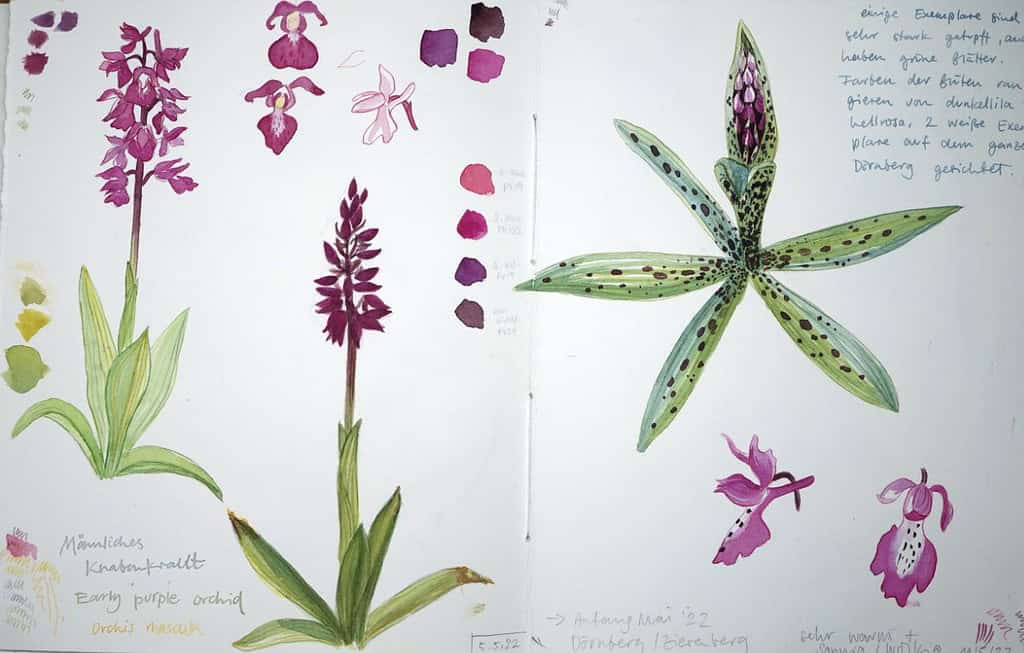
I chose to illustrate all wild orchids that I managed to spot in spring and summer of 2022 – I spotted 9 different species. It doesn’t sound like much to find 9 different flowers, but each one was a spectacular find for me – these plants are rare, protected, and they only bloom once a year for a few weeks.
My trips took my to local protected areas that are known for wild orchids – where I live there are many calciferous dry meadows – ideal for these plants. The orchids bloom in spring and early summer and afterwards, the areas are often used for grazing sheep or goats. This helps to keep the land free of bushes and trees (except for juniper bushes), which is important for this particular habitat.
The plants need open land to grow. You could say it is a mixture of man-made and natural landscape, an example of how land was used historically, and it shows how certain plant communities were able to find their niche. Often (or almost always) these orchids are also in symbiotic relationship with particular fungi in the ground, and most people who have tried to dig the plants out and transplanted them into their garden noticed that they don’t grow anywhere else.
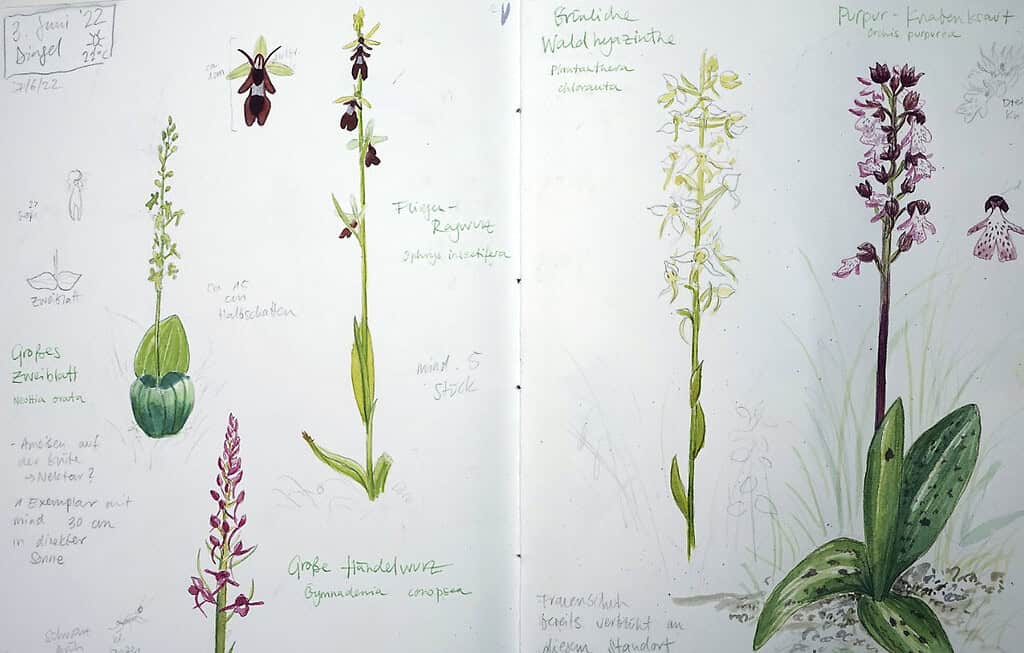
Ripping rare plants from their wild habitat is of course not allowed, but people still do it, and in some areas the specific places where orchids grow are kept secret because of this stupidity. In other areas flower photographers trample the flowers in order to get a got shot. That means some species are really hard to find.
I tried to be as careful as I could, not leaving the path too far to get a better view, and making sure not to sit down on or trample flowers when I sketched them. I also made sure not to spill any paint into these delicate habitats.
I’m hoping I can add more orchids to this series over time when I encounter more local orchids – I hope to embark on more new orchid hunting trips this year (2023) – I hope I will be fit again when spring comes around.
I’ve enjoyed field sketching these plants very much so far, although when it came closer to summer the days often were unbearably hot. Spring is definitely a nicer time for field sketching in these treeless meadows. There are also orchid species that grow in sparse woods, let’s hope there will be enough humidity in the earth for them to come out!
The illustrations
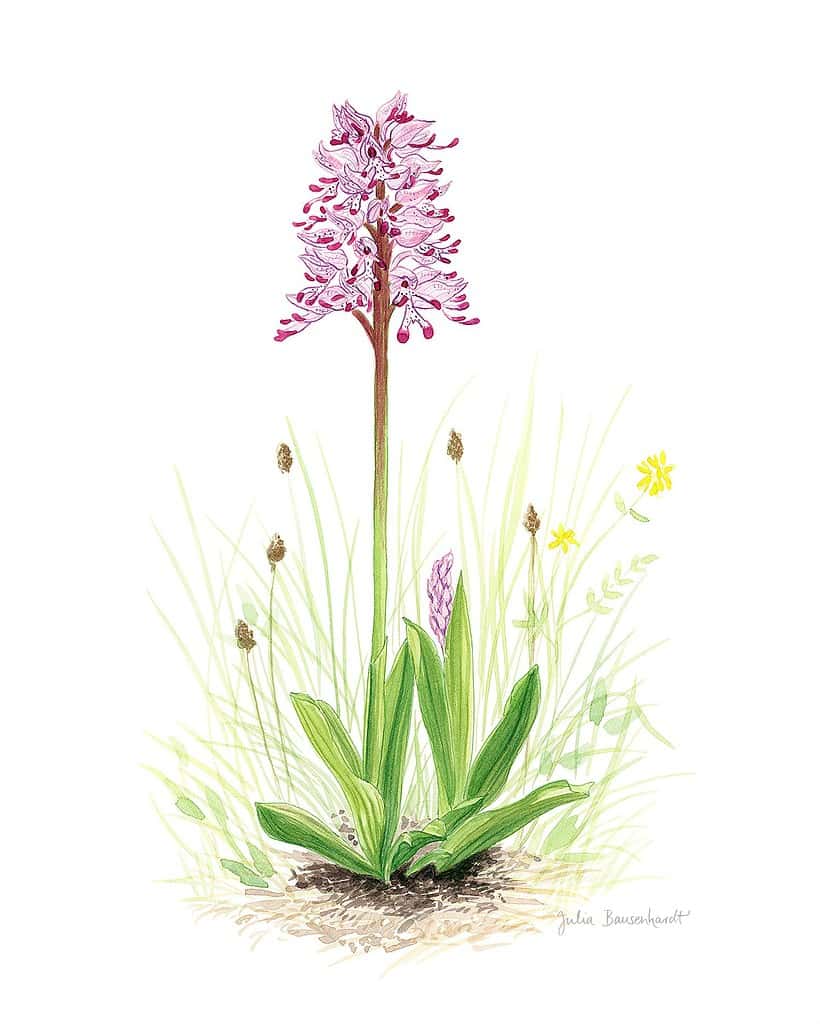
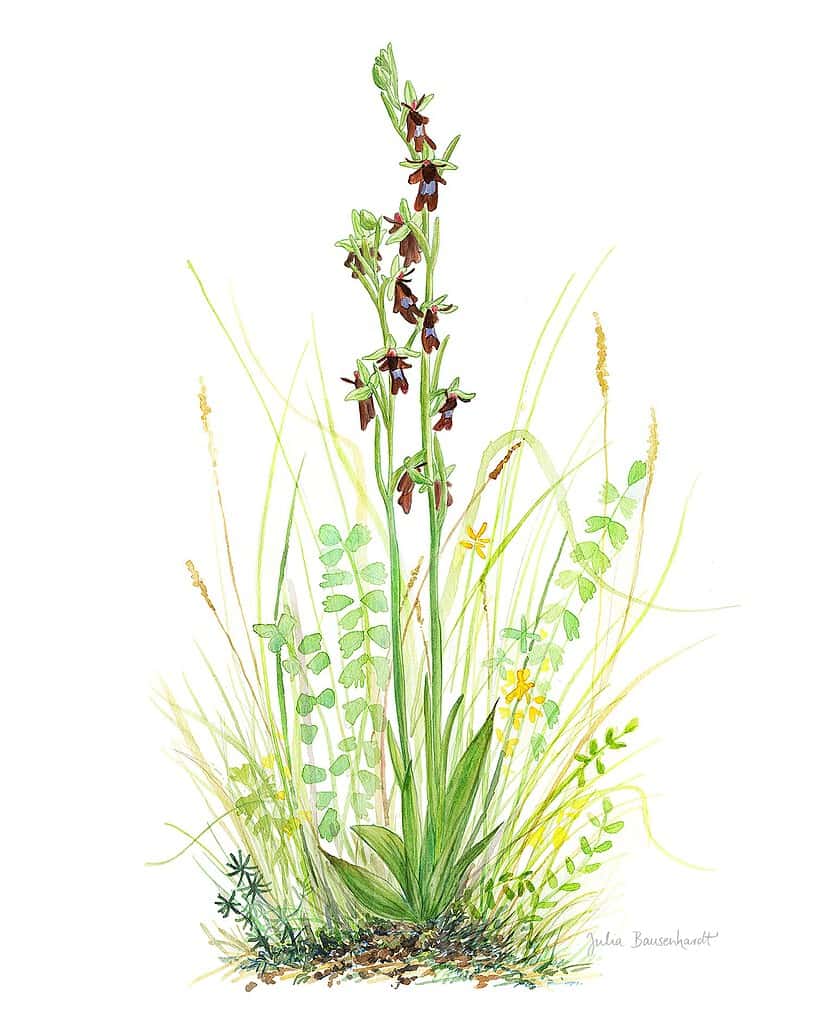
Let’s take a closer look at my illustrations now. Since many orchids have incredibly small flowers, I decided to go really big with my illustrations. I noticed in my field sketches that I often needed to draw the plants a bit bigger than they really were to include the fine details.
I worked slightly smaller than A3 (which was challenging when I scanned the illustrations later), and this gave me the possibility to work with very fine nibs for the line work (mostly EF fountain pens, and sometimes a fine Maru nib on a penholder).
Each painting went through the same stages:
- a pencil sketch that I transferred to watercolor paper
- inking the outlines with different waterproof inks
- painting the orchid with watercolors
- adding the surrounding weeds with watercolor
I put together a “typical specimen” from my sketches and photos for each orchid to show a recognizable version of the plant with its typical features. I still included small imperfections and quirks, and of course I had a lot of fun with the loose grasses around the orchids.
One nice aspect of these self-initiated projects is that I can be my own art director and choose how to depict the plants. I wanted to embed the plants in their surroundings and show a bit of the plants and weeds that grow around them. I’ve experimented with this technique in the sketchbook and like it a lot.
The center of attention is still the orchid in the middle – its features are more defined and precise, but at the same time I can indicate the habitat. I’ve seen this kind of depiction used by different artists in botanical field guides and I think it’s an attractive way to give more information about the habitat you can often find the flower in.

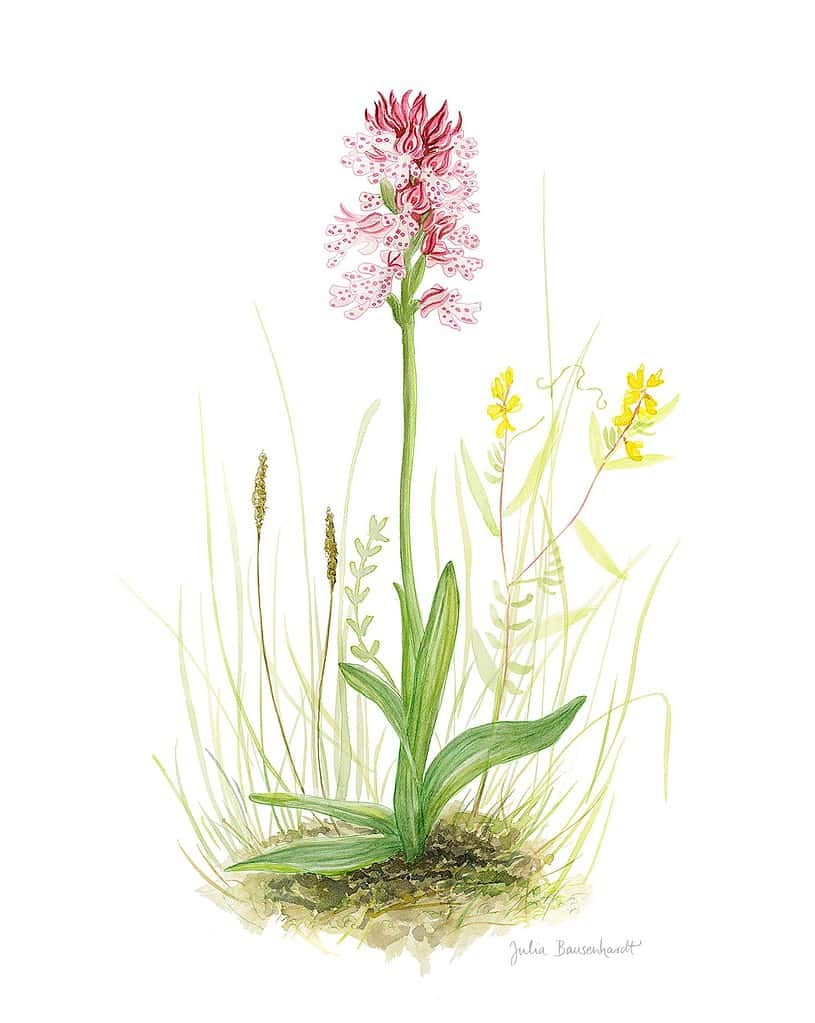
In some cases I sketched a few outlines for the grasses to see how they complement the orchid, but I found that the pencil lines were often in the way of the very soft effect I was going for, so in a few cases I simply made the weeds up as I went. This didn’t always turn out perfect, but since I’m still in the experimental stage with this technique, this is fine for me.
After finishing the paintings, I scanned each one. Due to the size I had to scan each painting in parts, and then stitch them. together digitally, gladly that’s almost no problem these days.
I then corrected the colors and contrast a bit, and then went through the arduous task of removing the background to have the flowers stand out on a nice white background. Tip: if you ever paint a similar subject and want to digitize and isolate your artwork from the background, don’t use watercolor paper that is “natural white”, instead use something that is “extra white”. I had a few problems with getting the contrast and colors right with the slightly yellower, natural white paper, especially for the delicate background elements. I also mostly use hot-pressed paper for the kind of projects, since I find that cold-pressed paper can be difficult with its more prominent paper structure.
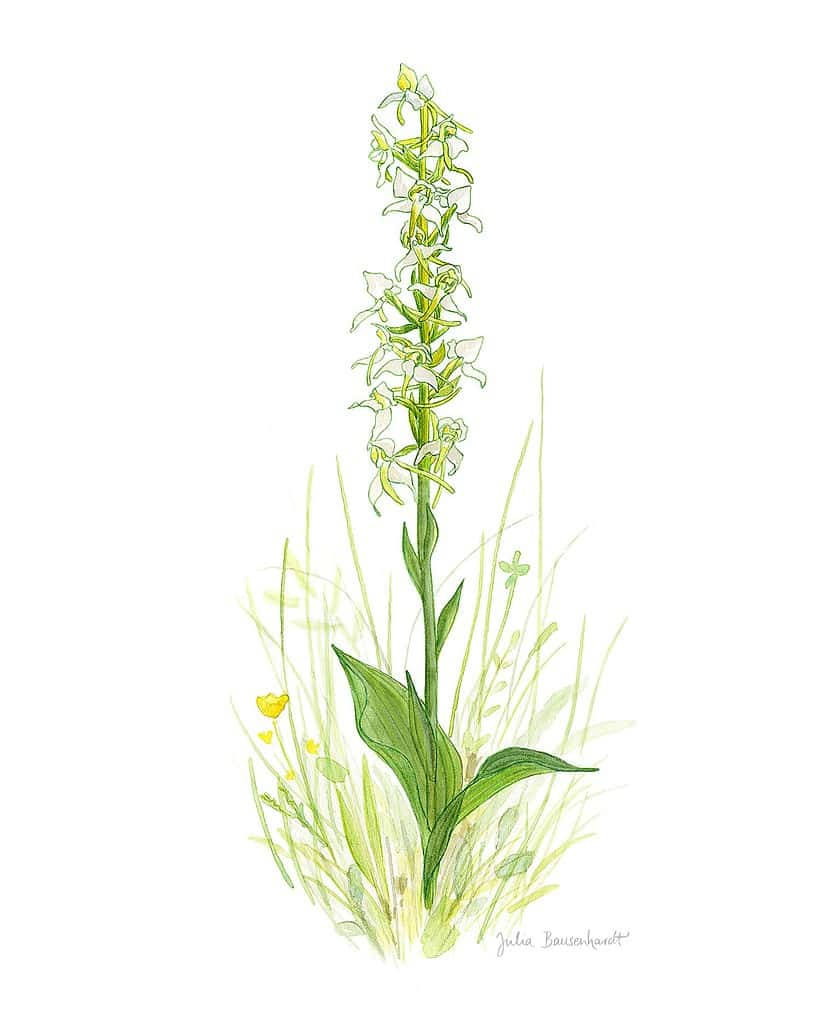
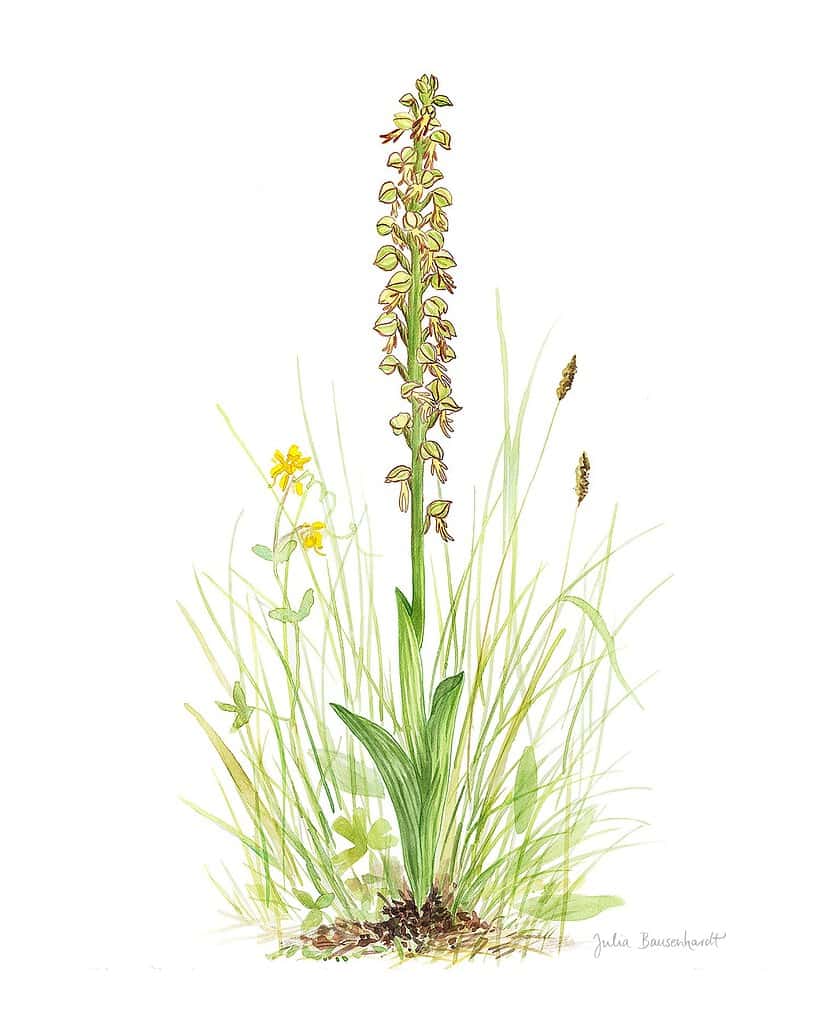
I’m really happy with how the illustrations turned out, and I want to explore this particular painting style more in the future.
I ended up putting together the whole series as art prints, so if you’re interested in prints or art cards, here you go:
I’m also planning to add more orchids to this collection as I discover them, so hopefully this will be an ongoing series! I’ll definitely share my new field sketching trips here on my blog and also on Youtube.
And before I forget to mention it, you can now support my work directly through Patreon by giving a small monthly donation! It’s your help will help me to do more projects like this one. Thank you for all the kind people who have decided to support me, it really means a lot to me!
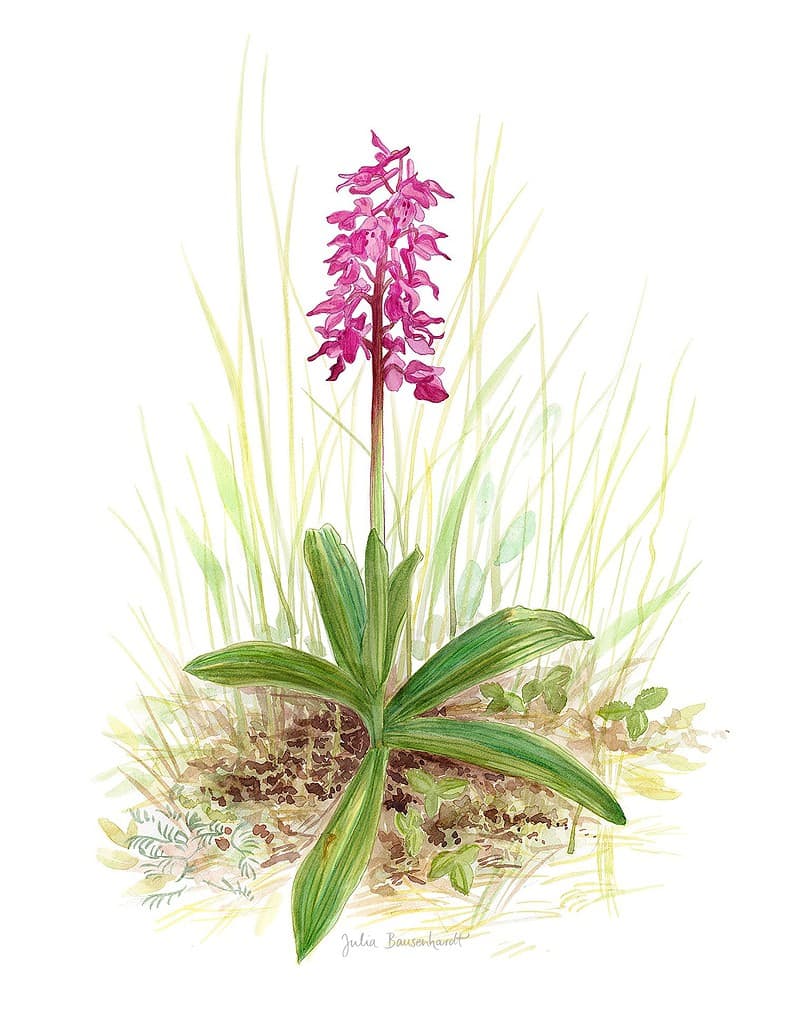
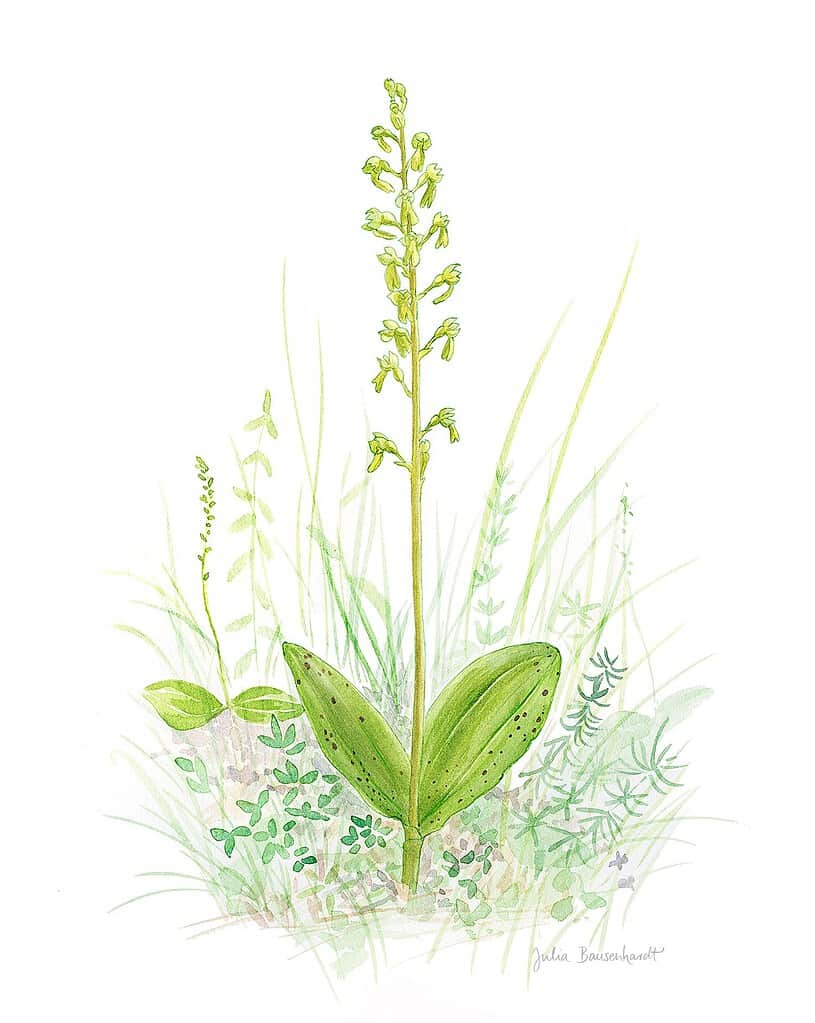


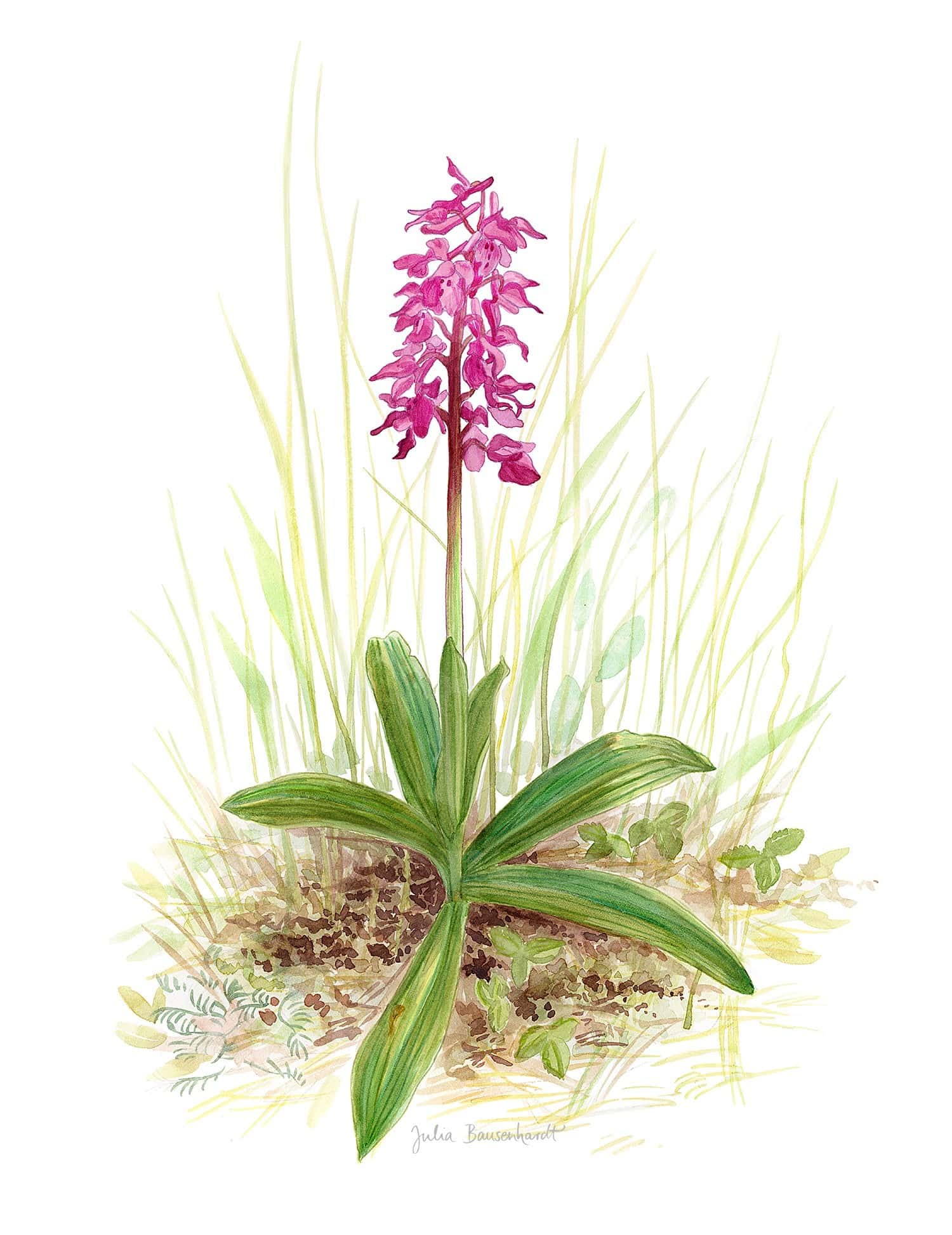

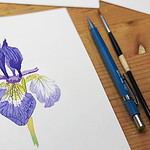
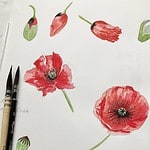
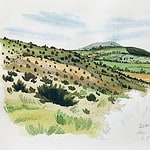
I am totally awed by these paintings! Great job!
Thank you very much! 🙂
I so enjoyed seeing this video this morning. What a wonderful way to start the day! Thank you for sharing it, and your talent. The paintings are beautiful.
Thank you kindly Liz! 🙂
Hello Julia. What amazing illustrations! Last summer you inspired me to look for orchids to sketch during my hikes. It was so nice. I also really enjoyed watching a video of the illustration process. Good point about the extra white paper. And you are right about the cold press paper texture when scanning/removing background. Unfortunately I find watercolor much harder to control on hot press paper. Maybe it’s just a matter of practice…
Oh, that’s very cool, did you find some orchids?
Yes, HP paper can be a bit difficult for controlling watercolor washes, I sometimes mess it up, too. It’s definitely a practice thing and I find sticking to the same paper also helps. 🙂
Actually, yes, I did. Only 2 different species, but I must say it’s so nice to see them in real as opposed to looking at a photograph. 🙂 Thanks for the tip on paper.
absolutely stunning Julia! So grateful for your sharing your process, inspiring and beautiful!!!
Thank you very much Nancy! <3
Still working through these orchid posts this morning and am SO inspired by both your images and the video, Julia! I want to look around my area (Southern Oregon, USA) and see if we have any wild orchids in our area as well. Your video inspires me to try a few different approaches to my own pen and ink sketching. Thank you SO much for this!
Thank you Janet! Definitely check local nature initiatives or nature centers to learn if/where they grow. Over here, the rangers/nature conservation authorities and newspapers also put out information. This helped me a lot to actually find some orchids. I hope you do too. 🙂
Sooooo beautiful! Off to look at the art cards . . .
I love this blog. I am retired and spend a lot of time outdoors in the woods. This gives me the ideas to use in my watercolors,and has led me to journal which I enjoy. Thank you for your. Beautiful inspiring blog . Tom F